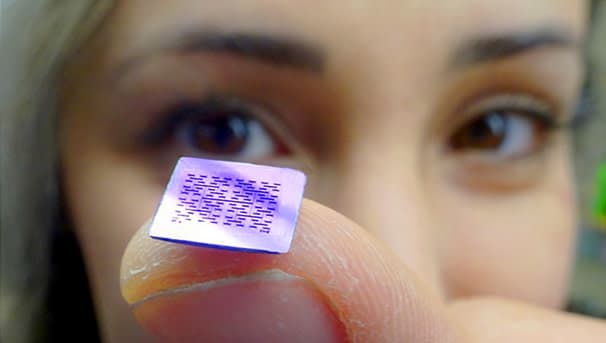A fight we don't have to lose
One in ten people will battle age-related eye diseases that could result in vision loss. A lot of us lose that battle, and our vision - but we don’t have to. People are living longer than they used to, and our eyes haven’t caught up yet. Dr. Richard Taylor and his incredible team of student researchers are building towards a world where we don’t have to outlive our eyesight.
The Problem:
One in ten people will deal with age related eye diseases that affect the retina, the part of the eye that captures and interprets light into signals to the brain. While medical science has discovered ways to solve or correct for problems with almost every other part of the eye, once diseases destroy our retinas, they’re gone. Many lose enough vision that everyday tasks like using phones, getting to and from work, enjoying a show or movie, or playing with kids and grandkids become difficult or even impossible. Learning to live without vision can be jarring and difficult.
 Simulated images of a dog when viewed using a healthy eye (left), using a fractal implant (middle) and using one of today’s conventional implants (right)
Simulated images of a dog when viewed using a healthy eye (left), using a fractal implant (middle) and using one of today’s conventional implants (right)
The Solution:
While digital photoreceptors are getting smaller and more effective, capturing the image is only half the battle. Your retina also needs to interface with your optic nerve so that information can be transmitted to your brain. Unfortunately, the wiring of modern electronics doesn’t interface well with the much more complicated, organic wiring of the human body. Because of this challenge, current retinal implants can restore partial vision, but not enough to re-empower people to work, play, or live how they did before their retinas decayed.
To solve this, Richard and his team have been developing a novel device inspired by our own human nervous system. This groundbreaking technology will allow for a more effective interface between an implant and our brains, allowing for more significant restoration of vision and massive improvements to quality of life for hundreds of millions of people. If successful, this technology could have a wide range of applications for medical devices in other parts of the body as well.
 What if there was a way to replace damaged retinas and restore vision? A woman holds a test model of a new kind of retinal implant with bio-inspired circuitry on her fingertip.
What if there was a way to replace damaged retinas and restore vision? A woman holds a test model of a new kind of retinal implant with bio-inspired circuitry on her fingertip.How you can help:
This vision won’t become reality overnight. Richard and his team are hard at work doing rigorous, trailblazing research that isn’t happening anywhere else in the world. Our campaign is raising funds to help Richard and his team train more student researchers in their trailblazing research methods to test new theories and bring this incredible vision closer to reality. Your gift will support incredible research and prepare our students to be the visionary researchers of the future.



